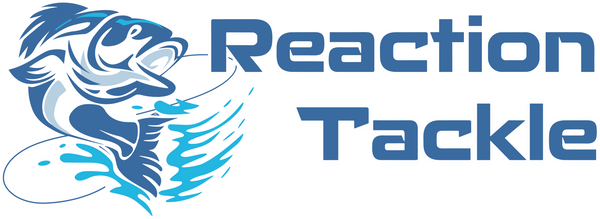Fishing Line 101: A Beginner's Guide to Getting Started
C.G. Proctor
If you're new to fishing or have only tried it once, the idea of selecting the right fishing line can be daunting. With so many options available, where do you even start? Don't worry—this beginner-friendly guide will walk you through everything you need to know about fishing lines, helping you feel confident and ready to hit the water. Throughout this guide, you'll find links to other helpful articles that delve deeper into specific topics.
At Reaction Tackle, we believe fishing should be enjoyable and accessible for everyone. Whether you're casting your first line or looking to refine your skills, we're here to help. Let's dive into the essentials of fishing lines and get you prepped for your next fishing adventure!
What is Fishing Line?
Fishing line is the cord used to catch fish. It connects your bait or lure to your fishing rod and reel. Choosing the right fishing line is crucial because it impacts your casting distance, the strength of your setup, and your overall success in catching fish.
Best Fishing Line for Beginners: Monofilament
1. Monofilament Line
- What it is: A single strand of nylon, monofilament is the most common and affordable type of fishing line.
-
Benefits:
- Easy to handle and knot
- Good stretch, which helps absorb shocks from fighting fish
- Versatile for various fishing techniques
-
Drawbacks:
- Less sensitive than other lines
- Can degrade over time with UV exposure
- Best for: Beginners and general-purpose fishing.
At Reaction Tackle, we offer monofilament lines in six vibrant colors: clear, yellow, blue camo, hi-vis orange, red and hi-vis green.
Check out our Monofilament selection here: Reaction Tackle Monofilament Fishing Line
Exploring Other Options
As you gain more experience, you might want to explore other types of fishing lines for specific situations.
2. Fluorocarbon Line
- What it is: Made from a type of plastic called polyvinylidene fluoride, fluorocarbon is nearly invisible underwater.
-
Benefits:
- High sensitivity, allowing you to feel even the slightest bites
- Abrasion-resistant, great for fishing around rocks and debris
- Sinks faster than monofilament, making it ideal for deep-water fishing
-
Drawbacks:
- More expensive than monofilament
- Stiffer, which can make it harder to handle and knot
- Best for: Clear water fishing and situations where line visibility matters.
Our 100% pure fluorocarbon lines come in two colors: pink and clear.
Discover our fluorocarbon options here: Reaction Tackle 100% Fluorocarbon Fishing Line
3. Braided Line
- What it is: Made from several strands of synthetic fibers woven together, braided line is known for its strength and durability.
-
Benefits:
- Extremely strong, allowing you to catch larger fish
- High sensitivity with no stretch
- Thin diameter, which allows for longer casts and more line on the reel
-
Drawbacks:
- More visible underwater
- Can be harder to knot and handle for beginners
- Best for: Heavy cover fishing, deep water, and targeting big fish.
Reaction Tackle offers an impressive selection of braided lines with 18 color options, including no-fade colors, multicolor options, and solid colors. Our braided lines range from 6lb in 4-strand to 300lb in 8-strand. For a detailed guide on choosing the best braided line for your needs, check out our blog post: Navigating the World of Braided Fishing Lines
Explore our braided line collection here: Reaction Tackle Braided Fishing Line
Choosing the Right Fishing Line
For beginners, monofilament is often the best choice due to its ease of use and versatility. As you gain more experience and understand your specific needs, you might explore fluorocarbon and braided lines.
Understanding Line Strength
Fishing line strength, measured in pounds (lb), refers to the maximum weight the line can handle before breaking. Here are some general guidelines for choosing line strength based on the type of fish you’re targeting:
- Panfish (bluegill, crappie): 2-6 lb test
- Trout: 4-8 lb test
- Bass: 8-12 lb test
- Walleye: 8-12 lb test
- Catfish: 15-30 lb test
- Saltwater species: 20-50 lb test
How to Spool Your Reel
Spooling your reel with fishing line is a critical step. Here’s a simple step-by-step guide to get you started:
- Attach the Line: Tie the line to the reel spool using a Palomar knot.
- Fill the Spool: Slowly turn the reel handle to load the line onto the spool. Make sure the line is coming off the filler spool in the same direction as it’s going onto your reel spool.
- Check for Tension: Maintain slight tension on the line with your fingers to ensure it spools evenly.
- Fill to the Right Level: Fill the spool until it’s about 1/8 inch from the edge to prevent tangles and ensure smooth casting.
Essential Tips for Beginners (and All Anglers)
- Start with Monofilament: It's easy to use and versatile. For more information on monofilament lines, check out our blog post: here.
- Learn Basic Knots: Mastering a few essential knots like the Palomar knot and improved clinch knot will make your fishing more successful. Learn more about essential fishing knots in our previous post: here.
- Practice Casting: Spend some time practicing your casting technique in an open area to get comfortable with your gear. Learn about the key factors that affect casting distance: here.
- Be Patient: Fishing requires patience and practice. Don’t get discouraged if you don’t catch fish right away. Check out these tips to catch more fish anywhere: here.
Ready?
Fishing is a rewarding and relaxing hobby that anyone can enjoy. With the right fishing line and a bit of practice, you'll be well on your way to becoming a successful angler. Try starting with monofilament, get familiar with your gear, but most importantly, have fun. Happy fishing!
Check out our fishing line selection!









